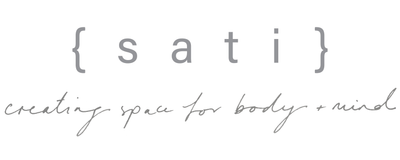







Today marks the launch of Amala, our beautiful new spot print which is now available in our round cushion, rectangle cushion and yoga bag.
Like all of our prints, Amala has had a long journey to ‘becoming’ and we wanted to give you a little glimpse behind the scenes to show you just how much time and effort it takes to create one simple print.
This unique spot started life as a series of marks in my sketchbook and initially I wasn’t sure how well the design would translate to a wooden block given how small the spots were. Our block carving mentor cautioned us on this, pointing out the potential for breakage with such tiny shards of wood (especially in the printing process itself - they bang the blocks pretty hard!) but he encouraged us to try anyway. He was right, the wooden ‘pins’ were quite fragile (we had to glue a couple back on after sampling!) but the result was more beautiful than we had imagined.
There is something about a monochrome spot print that will never fail to please me and the random configuration of these marks only adds to this sense of satisfaction (is it just me?)
Perhaps the most amazing thing about Amala is that the pigment used to create the black spot is made from scrap metal. Yes that’s right - old horse shoes, bolts, rusty chains, disused sheet metal, old rusty nails - anything will do. These metal scraps are left to ferment in a tub of water for a period of time, infusing the water with iron-rich molecules which turn the water black. The longer the metal is left in the water, the more concentrated the colour will become. This iron water is then combined with jaggery (a type of cane sugar) to create a print paste that the wooden block is dipped into for printing. Interestingly, the print paste is grey/brown in colour when it is first printed and only deepens to a solid black after a few minutes, when it is exposed to the air.
Below is a brief explanation of the printing process. As you can see it takes many hands and many weeks to create one simple print!
the process // amala
Step 1 The fabric is scoured (washed). This takes approximately 1 week as it is a repeated process of breaking the fibres down to loosen them so that they are ready for the dye/print paste.
Step 2 The fabric is dipped in a solution of Harda, a native Indian fruit, which acts as the mordant. A mordant allows the dye to fix onto the fabric. Harda also gives the fabric a slightly ivory tone.
Step 3 The print paste, made up of fermented iron water and jaggery, is mixed by hand in a tub.
Step 4 This paste is poured into a special tray lined with layers of porous cloth to regulate the flow of ink.
Step 5 The printer dips the wooden block into the ink tray and begins printing, returning to load up the block after every go.
Step 6 Once the fabric has been printed it is laid to dry in the sun.
Step 7 The fabric is washed in water and ‘hit’ against a wall to agitate the excess dye out. This process is repeated again after which the fabric is left to dry in the sun.
Some food for thought as you sit on your spotty cushion :)


Leave a comment